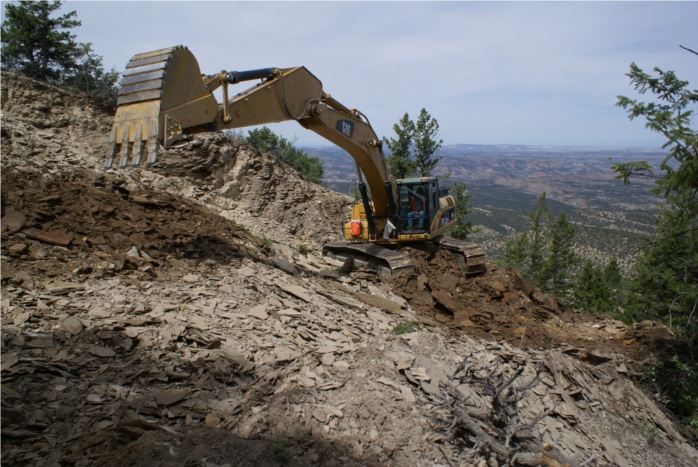November 2009 Vol. 236 No. 11
Features
Snelson Companies Construct Pipeline in Challenging Ground Conditions in Colorado

Snelson Companies Inc. recently completed the Colorado Hub Connection Pipeline for Williams Gas Pipeline/Northwest Pipeline GP. The new 26.5-mile pipeline and related facilities connect the Meeker/White River hub in Rio Blanco, CO with Northwest’s existing mainline system 17 miles south of Rangely, CO.
The project will provide approximately 360,000 Dth/d of firm transportation service on Northwest’s mainline to delivery points as far south as Ignacio, CO. At Ignacio, Northwest interconnects with El Paso Natural Gas and Transwestern Pipeline Company. The estimated cost of the project is $60 million.
The Colorado Hub also allows Northwest to connect the Piceance Basin supplies with markets in the western U.S. and to subscribe existing mainline capacity on a long-term basis.
According to Snelson’s Project Superintendent Jimmie Burns, mobilization on the project began in May 2009 and construction started on June 1. The project was completed Sept. 17, well ahead of the established in service date of Nov. 1. Not only was the project completed ahead of time, it was on budget and achieved excellent environmental compliance with the Federal Energy Regulatory Commission and Bureau of Land Management.
Burns said this was the most challenging mainline job his company has undertaken in the last 10 years. To overcome the challenges, the traditional sequence crews used to lay the mainline kicked off at the east end of the project at the Meeker station location. Simultaneously, clearing and ditch crews started work near the west end of the project at Cathedral Butte and continued westward to the end of the line eight miles away. This was required due to schedule concerns and the anticipated rock on the west end of the project where an entirely new eight-mile right-of-way had to be built.
In pointing out some of the challenges in clearing a new right-of-way with unknown quantities of rock and timber, Burns cited the following:
- Sections of right-of-way that narrowed up to 75 feet due to environmental constraints.
- Areas in sightline of public roads.
- Several deep canyons where cable and winches were needed for equipment movement.
- Slopes up to 37 degrees.
- Hogbacks and large side cuts.
- Fourteen days of drilling and blasting surface rock and ditch rock that required the use of four John Henrys on part of the job.
- Numerous tie-in welds were required where the pipe gang could not lay.
- Sensitive cultural area within the Canyon Pintado Historic District.
- Requirements to minimize adverse impacts to paleontological resources.
Burns pointed out that approximately two miles of the right-of-way was in an exclusion zone that required crews to move around because of a migratory bird reserve. Nevertheless, the owner was pleased when eight miles of the right-of-way on the west end of the project were completed in only three weeks.
Burns also said that due to the dry and dusty condition on the job, nine water trucks were required to support the crews and maintain a crust on the access roads.
Challenging soil conditions throughout the project required a large equipment spread that included: 18 track hoes, 15 D-8s, four John Henrys, two Worldwide SPD padding machines, two road graders and a total of 13 CAT 583 side booms.
Milbar Hydro-Test Inc. served as Snelson’s hydrostatic testing subcontractor on the project. Since much of the project was located 8,000 feet above sea level, the numerous elevation changes over the pipeline route made it necessary for the testing phase of the project to be broken down into nine sections. Although the length of the high-elevation portion of the project was extraordinary, the topography was what made the testing difficult. Nevertheless, no failures in the testing occurred and an Enduro Pipeline Services’ caliper pig discovered no abnormalities.
Burns said that at the peak of construction, the crew size, including inspectors and subcontractors, totaled approximately 300. Moreover, most of the crews were able to consistently achieve a one mile per day production level.
As the project neared completion, Burns said Williams was pleased with the overall project and attention to detail the restoration crews attained.





Comments